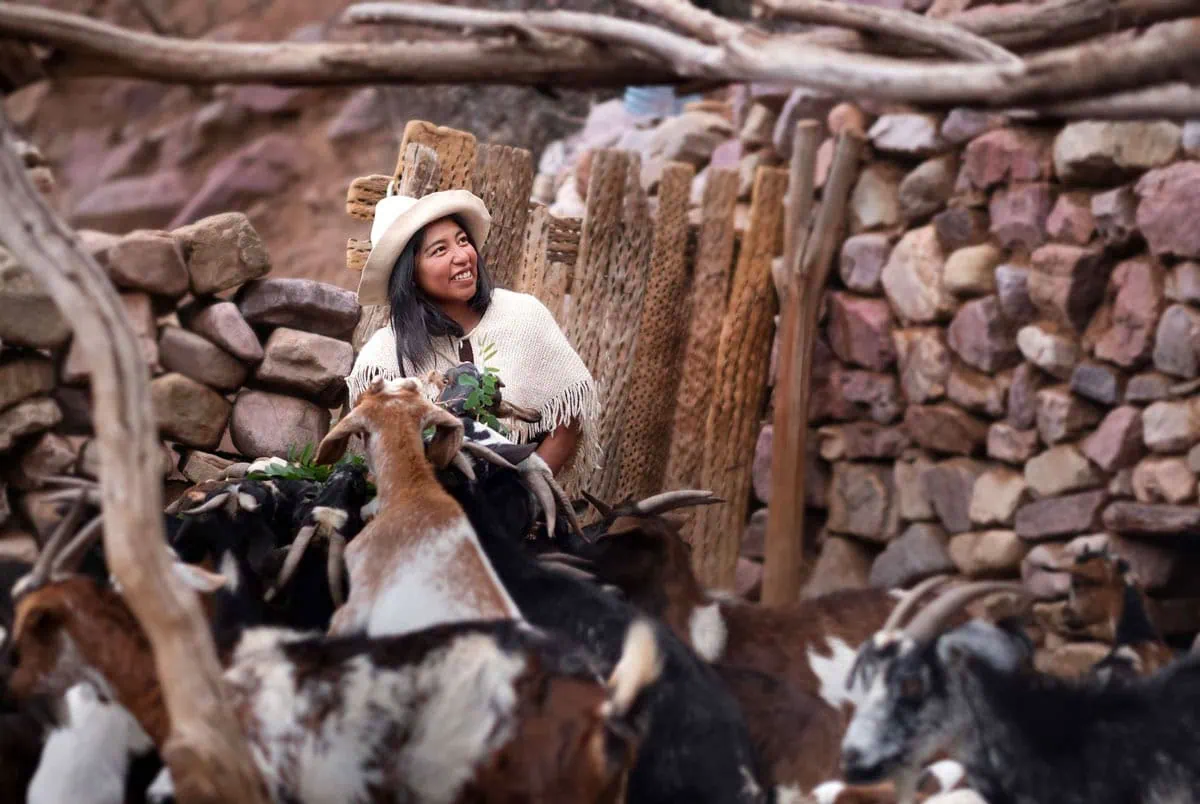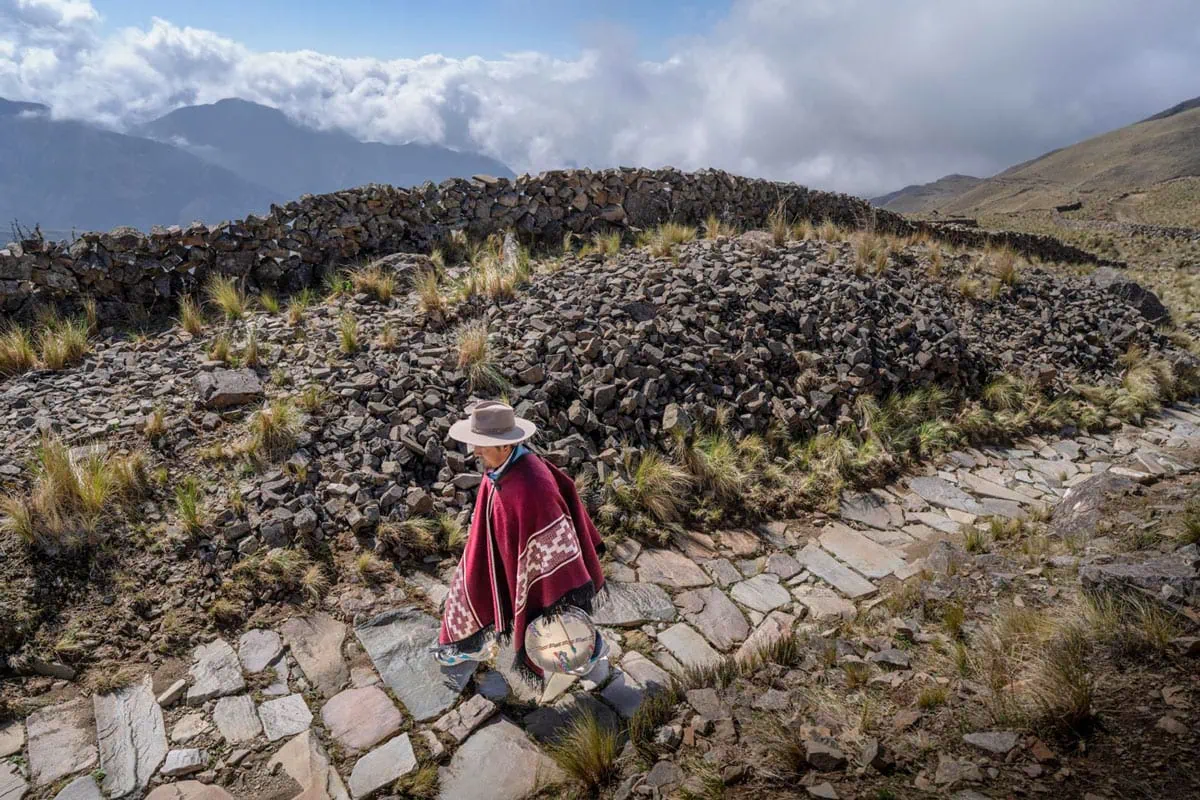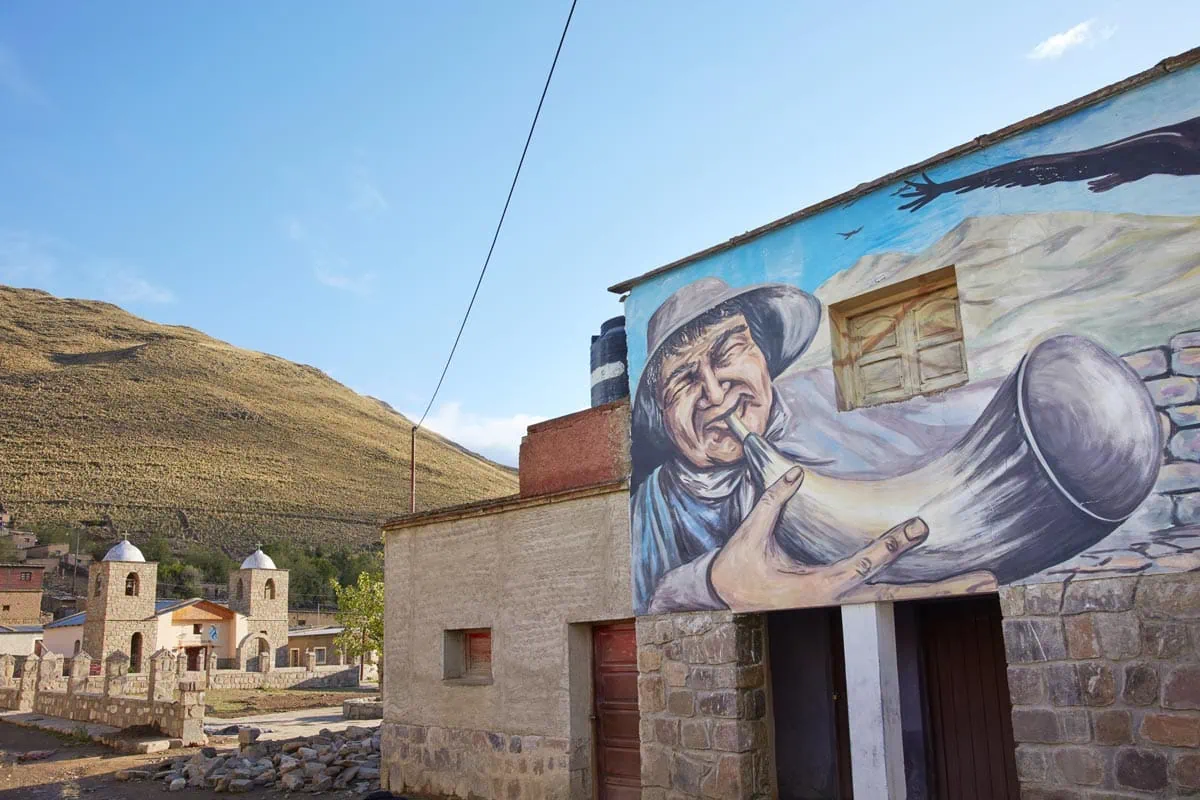Argentine Northwest (NOA)
Discovering the NOA: A Journey Through Culture, Nature, and History
The Argentine Northwest (Noroeste Argentino or NOA) is a region rich in cultural heritage, breathtaking landscapes, and history.
Encompassing the provinces of Jujuy, Salta, Tucumán, Catamarca, La Rioja, and Santiago del Estero, this area offers travelers a wide range of experiences, from colorful mountain ranges and high-altitude deserts to vibrant festivals and ancient archaeological sites.

Looking for a Private Tour?
We can modify the itineraries and duration according to your needs and travel dates.
Write to us to get a quote.
ARGENTINE NORTHWEST PHOTO TOURS
4x4 Off-Road Adventure

Salta: the entrance gate to the Argentine Northwest
Salta, often called “La Linda” (The Beautiful), is a fascinating city located in the Lerma Valley in northwest Argentina. Known for its colonial charm, vibrant culture, and beautiful natural surroundings, it is the gateway to visit many of NOA’s attractions.
Founded in 1582, Salta boasts well-preserved colonial architecture that reflects its Spanish heritage. The city’s historic center is a delightful maze of cobblestone streets, large plazas and elegant buildings.
Salta’s 18th-century Cathedral, with its pink facade and intricate details, is a testament to the city’s colonial past. Another architectural gem is the Cabildo, a former city hall and prison that now houses the Historical Museum of the North.
A network of cultures: Indigenous and European
Argentine Northwest is a melting pot of cultures, where indigenous traditions blend with Spanish colonial influences.
Indigenous peoples, such as the Quechua and Aymara, among many others, have left an indelible mark on the region’s culture, language, and crafts. Traditional music, dance and festivals, such as the Humahuaca Carnival in Jujuy, showcase the region’s rich cultural heritage.
Spanish colonization added another layer to the cultural landscape, evident in the architecture and urban layout of cities such as Salta and Tucumán.
The colonial charm of these cities, with their cobblestone streets, whitewashed buildings, and beautiful churches, transports back in time.

Quebrada de Humahuaca
Argentine Northwest is renowned for its extraordinary landscapes.
The Quebrada de Humahuaca, is one of the country’s most fascinating regions. Surrounded by the dramatic mountains of the Eastern Cordillera, this deep valley follows the course of the Río Grande from north to south, linking the high Andean plateau with the fertile lowlands. Its unique blend of natural beauty, millenary history, and vibrant cultural life has earned it recognition as a UNESCO World Heritage Site in 2003, under the category of “cultural landscape”.
Each town in the quebrada has its own personality and charm, yet all share the adobe architecture, cobblestone streets, and an atmosphere that feels timeless.
Purmamarca is famous for the Cerro de los Siete Colores (Hill of Seven Colors), a geological wonder whose layered slopes seem painted by hand. Its main square hosts a daily handicraft market, with textiles, ceramics, and carved gourds on display.
Tilcara, with its lively atmosphere, is home to the Pucará de Tilcara, a reconstructed pre-Inca fortress that offers sweeping views of the valley. Museums, festivals, and a strong music scene make it one of the cultural hubs of the quebrada.
Humahuaca, the town that gives the valley its name, sits at the northern end and preserves a strong colonial flavor. Its whitewashed church, monumental Independence monument, and traditional peñas (folk music venues) reflect the town’s historical and cultural weight. It is also the entrance gate to the Hornocal Mountains.
Smaller villages like Maimará, Huacalera, and Uquía also reward visitors with quiet beauty. Uquía’s church is particularly notable for its baroque paintings of ángeles arcabuceros (angels with muskets), a striking blend of European and Andean artistic traditions.
The Argentine Puna: a High-Altitude Adventure
The Argentine Puna is a vast plateau that stretches across the northwestern provinces of Jujuy, Salta and Catamarca. Known for its beauty, remote landscapes, and unique cultural heritage.
Located at elevations ranging from 3,000 to over 4,500 masn, Argentina’s Puna is one of the highest and most remote regions in the country.
The landscape is dominated by a series of striking geological formations, including salt flats, volcanic peaks, and broad plateaus. The arid environment is characterized by sharp temperature variations, intense sunlight, and starry skies.
Starting from the Puna of Jujuy with the Valley of the Moon of Cusi Cusi and the Salinas Grandes, up to the Puna of Salta and Catamarca, the landscapes one passes through are breathtaking.
Some of the most iconic places of the Puna of Catamarca are the Salar de Antofalla, and the Pumice Stone Field. In the Puna of Salta, the Salar de Arizaro, is another impressive salt marsh, known for the Arita Cone, a conical formation that rises from the salt. No visit is complete without a stop in the Martian landscape of the Devil’s Desert.

The Puna is a treasure trove of geological wonders. The Campo de Piedra Pómez (Pumice Stone Field) in Catamarca is an extraordinary landscape of pink and white pumice stone formations that resemble a lunar surface. Formed by ancient volcanic activity, these unique rock structures provide a fascinating setting for hiking and photography.
Despite its harsh environment, the Puna has been inhabited for millennia, and its cultural heritage is deeply rooted in the traditions of the indigenous peoples who call it home. Quechua and Aymara communities have preserved their customs, languages, and way of life, offering a glimpse into ancient Andean cultures.
Villages such as San Antonio de los Cobres and Susques in Jujuy offer opportunities to learn about local traditions, crafts and hospitality. Handicrafts of textiles, pottery, and silver reflect the enduring cultural practices of the region’s inhabitants.
Puna’s extreme conditions have led to the evolution of unique flora and fauna adapted to the high altitude environment.
Notable wildlife includes the vicuña and guanaco, both relatives of the llama, which roam the arid plains in search of the sparse vegetation. Birdwatchers can observe the soaring Andean condor and several species of flamingos inhabiting the salt lakes.
Historical and Archaeological Treasures
History buffs will find much to marvel at in Argentine Northwest. The region is dotted with important archaeological sites that offer a window into pre-Columbian civilizations.
One of the most important is the ruins of Quilmes in Tucumán, the remains of one of the largest pre-Columbian settlements in Argentina.
The Quilmes people, who resisted the Spanish conquest for more than a century, left behind a complex of stone structures that offer insights to study and understand their way of life.
In Salta, the Museum of High Altitude Archaeology (MAAM) houses the famous “Children of Llullaillaco,” three Inca mummies discovered on the summit of the Llullaillaco volcano. These remarkably preserved remains provide valuable information about Inca rituals and culture of the Andean people.

The Yunga: Argentina’s Subtropical Mountain Forest
In the arid landscapes of northwest Argentina, where high Andean plateaus meet sun-scorched valleys, there lies an unexpected and lush environment: the Yunga. Known also as the montane subtropical forest, this ecosystem stretches like a green ribbon along the eastern slopes of the Andes, from the provinces of Salta and Jujuy down through Tucumán and into Catamarca.
The Yunga is a transitional environment, wedged between the dry Chaco lowlands and the high puna desert. Its unique geography and climate create a humid, forested corridor that stands in stark contrast to the surrounding arid lands. This makes it one of the most diverse and fragile ecosystems in Argentina.
The Yunga thrives thanks to moist winds from the Atlantic that rise and cool against the Andean foothills, releasing rain over the eastern slopes. Precipitation is abundant, especially in summer, and mist often shrouds the forest, giving it a mysterious, almost tropical character.
The landscape is steep and dramatic, composed of deep valleys, fast-flowing rivers, and densely wooded hillsides. Elevation plays a key role in shaping the forest:
Lower Yunga (400–1,000 meters): Warm, humid, and dense, with lianas, bromeliads, and towering trees.
Upper Yunga (1,000–3,000 meters): Cooler, cloud-covered, and home to mosses, ferns, and orchids clinging to tree trunks.
This vertical diversity creates a mosaic of habitats in a relatively narrow strip of land.
For centuries, Indigenous peoples such as the Ocloyas and Omaguacas inhabited the fringes of the Yunga, using its resources sustainably. Later, during colonial times, the forest provided timber, yerba mate, medicinal plants, and fertile lands for farming.
Today, local communities maintain traditions tied to the land, from harvesting wild fruits and honey to practicing rituals that honor Pachamama (Mother Earth). Towns like San Lorenzo (Salta) or Tafí Viejo (Tucumán) serve as gateways to the Yunga, where visitors can glimpse this rich cultural-natural fusion.
Despite its importance, the Yunga is also among Argentina’s most endangered ecosystems. Deforestation for agriculture (notably sugarcane and citrus), cattle grazing, and urban expansion have fragmented the forest. Large mammals such as jaguars and tapirs face serious threats due to habitat loss and hunting.
Protected areas like Calilegua National Park (Jujuy), El Rey National Park (Salta), and the Reserva de las Yungas Biosphere Reserve play a crucial role in conserving this unique environment. Still, ongoing community-based conservation efforts are essential to balance human activity with ecological preservation.
The Qhapaq Ñan (Great Inca Road)
The Qhapaq Ñan—known as the Great Inca Road—is a powerful thread connecting Argentina to a vast network of ancient wisdom and endurance. This monumental trail system, once the lifeline of the Inca Empire, stretches across rugged highlands, deep valleys, and windswept deserts, linking the past with the present in an awe-inspiring journey.
In Argentina, the Qhapaq Ñan reveals a hidden world where stone paths echo with the footsteps of messengers and pilgrims who once crossed these lands. From the dramatic peaks of the northwest to the sacred valleys below, travelers walk in the shadows of mountain gods and among ruins that whisper stories of resilience, spirituality, and unity. Every curve of the trail holds the heartbeat of Andean culture—its agricultural genius, architectural marvels, and unbreakable bond with Pachamama, Mother Earth.
To follow the Qhapaq Ñan in Argentina is more than a hike—it is a pilgrimage through time, a call to connect with ancestral roots, and a reminder that harmony with nature and community is a legacy worth preserving.

Calchaquí Valleys: from Cachi to Cafayate
The Calchaquí Valleys (Valles Calchaquíes) stretch across the heart of northwest Argentina, encompassing parts of Salta, Tucumán, and Catamarca provinces.
The Calchaquí Valleys take their name from the Calchaquí people, one of several Diaguita-speaking groups that inhabited the region before the Spanish conquest. Skilled farmers, potters, and builders, they developed sophisticated irrigation systems and left behind archaeological sites that still tell their story.
From the 16th to the 17th centuries, the valleys were the stage of the Calchaquí Wars, where Indigenous groups fiercely resisted Spanish colonization for over 130 years. The region’s Indigenous heritage lives on in local crafts, festivals, and agricultural practices, intertwined today with colonial traditions.
Among its most remarkable towns are:
Cachi: A quiet, whitewashed village with cobblestone streets, adobe houses, and a colonial church. Nearby, the Archaeological Museum of Cachi preserves artifacts that span thousands of years.
Cafayate: The wine capital of the north, famous for its Torrontés grape variety. Surrounded by vineyards and red-rock canyons, it is both a cultural and gastronomic hub.
Molinos: A historic village with a 17th-century church and a former colonial hacienda that once belonged to Governor Nicolás Severo de Isasmendi.
San Carlos and Angastaco: Traditional towns where time seems to stand still, ideal for experiencing local folklore.
The Ruta Nacional 40, Argentina’s legendary highway, winds through the valleys, connecting these villages and offering unforgettable scenery.
One of the most surprising features of the Calchaquí Valleys is their wine culture. With vineyards located among the highest in the world—some above 3,000 meters—the region produces wines of intense flavor and aroma. The flagship varietal, Torrontés, is a fresh, aromatic white wine that has become the pride of Cafayate.
The valleys are also known for their hearty cuisine: empanadas salteñas, tamales, humitas, and goat stews, often accompanied by Andean potatoes and quinoa. Local cheeses and artisanal preserves round out the gastronomic experience.
Gastronomy and Wine in the NOA
A visit to Argentine Northwest would not be complete without savoring its unique gastronomy. The region’s cuisine is a delicious fusion of indigenous and Spanish flavors.
Traditional dishes such as empanadas, tamales, and humitas showcase the area’s agricultural wealth and culinary heritage. The use of local ingredients such as quinoa, corn, and potatoes reflects the Andean influence on the local diet.
The Calchaquí valleys in Salta and Catamarca are also home to some of the highest vineyards in Argentina, producing exceptional wines. The region is particularly known for Torrontés, a fragrant white wine that pairs perfectly with the local cuisine.

Argentine Northwest Festivals and Celebrations
Argentine Northwest is alive with festivals and celebrations that reflect its vibrant culture and traditions. One of the most significant is the Fiesta de la Pachamama (Mother Earth), celebrated in August with offerings, music and dancing.
The region hosts religious festivals, such as the Feast of the Virgin of the Valley in Catamarca, which attracts thousands of pilgrims each year. In addition, the carnivals of Humahuaca and Uquia are extraordinary moments to visit the area.
Practical Tips for Travelers
Best Time to Visit: The best time to visit the Argentine Northwest largely depends on what you want to experience, but generally, the optimal periods are during the spring (September to November) and fall (March to May).
Getting Around: Roads in some areas can be challenging. Hiring a Private 4×4 Driver is generally the safest and most advantageous option, so you can also make excursions to off-road areas of the region with an experienced guide.
Safety: Locations like the Puna of Salta and Jujuy have high altitudes. Acclimate slowly, stay hydrated and don’t eat heavily.
Currency: The local currency is the Argentine peso. ATMs can be scarce in remote areas. Carry enough Argentine pesos for your needs.
